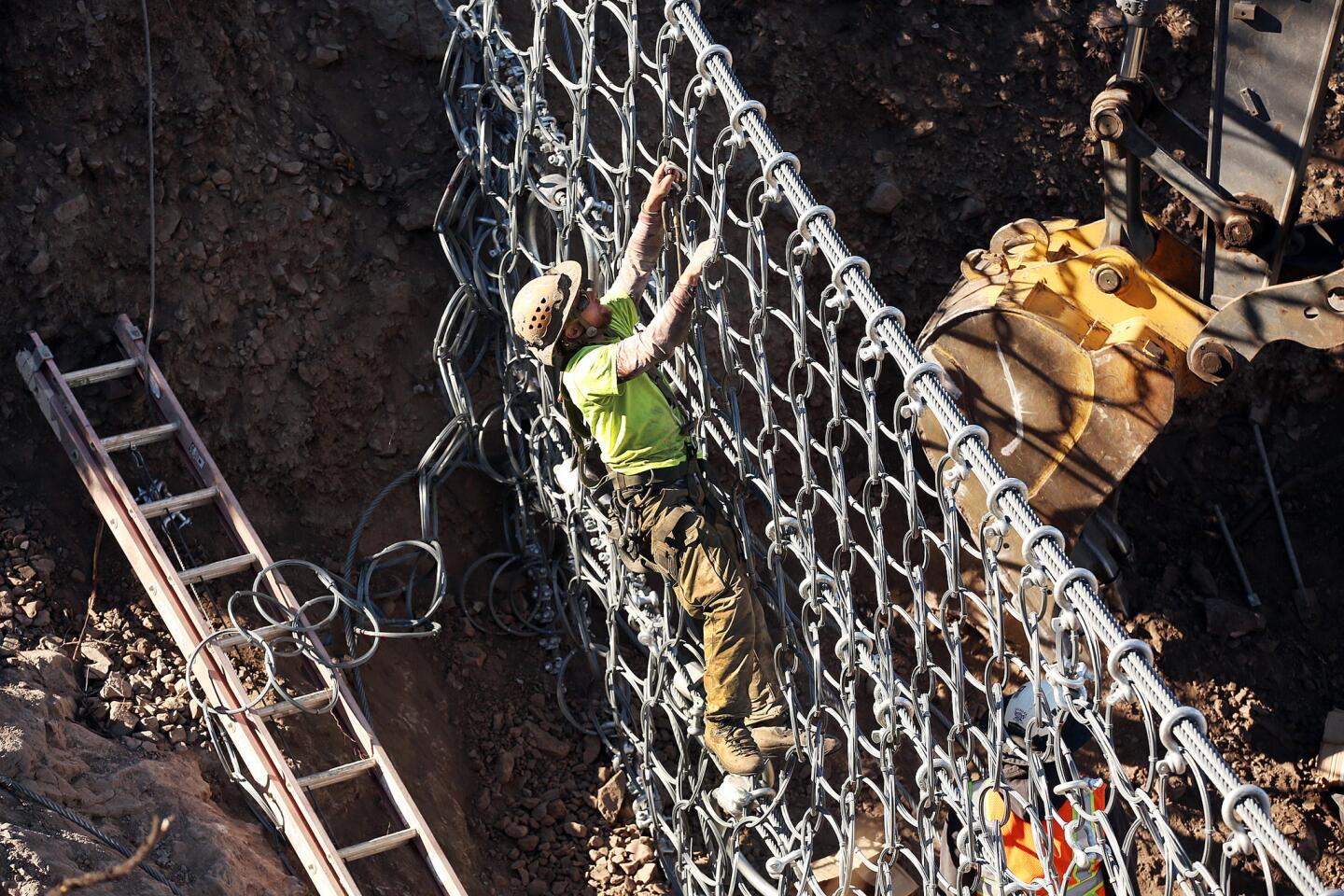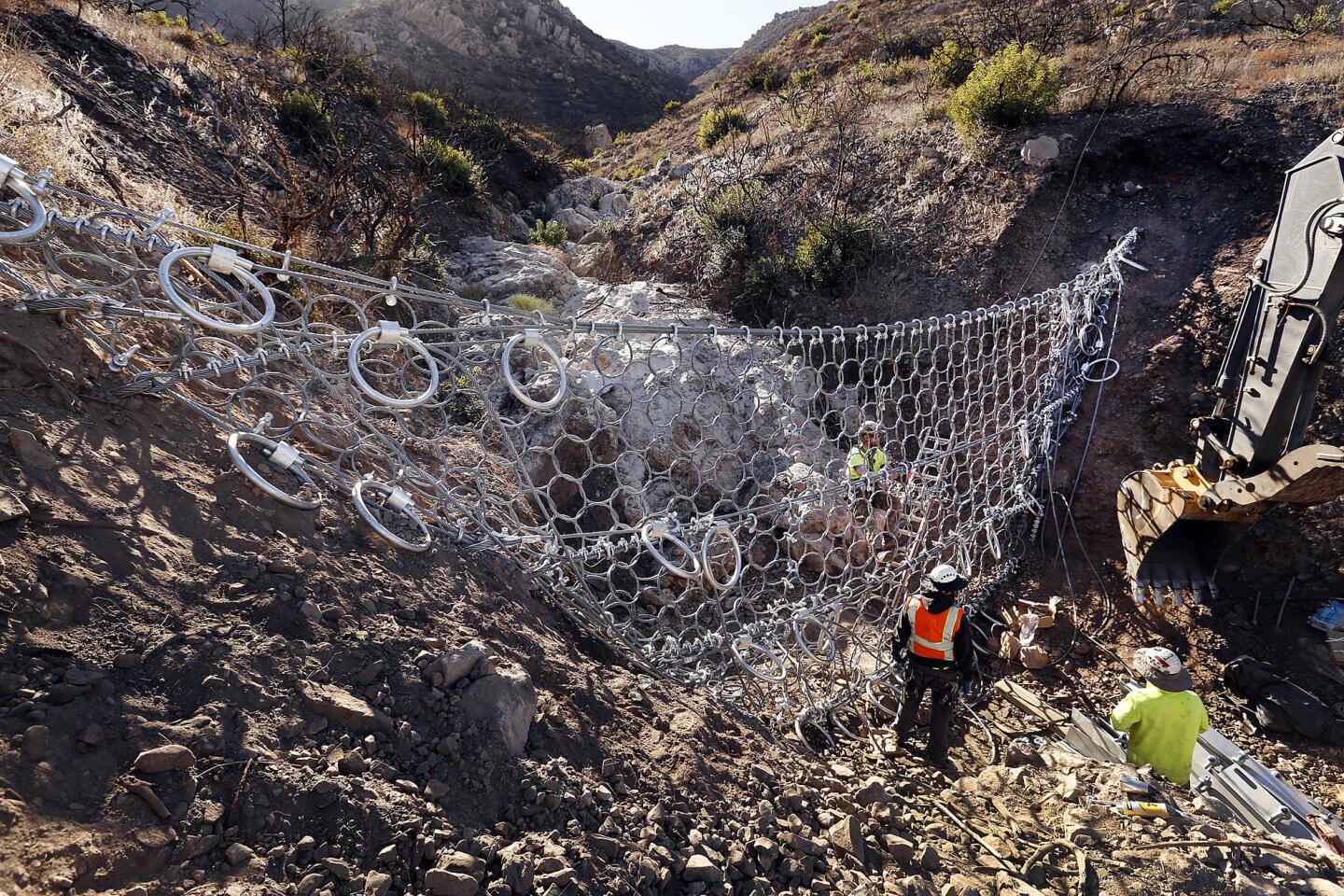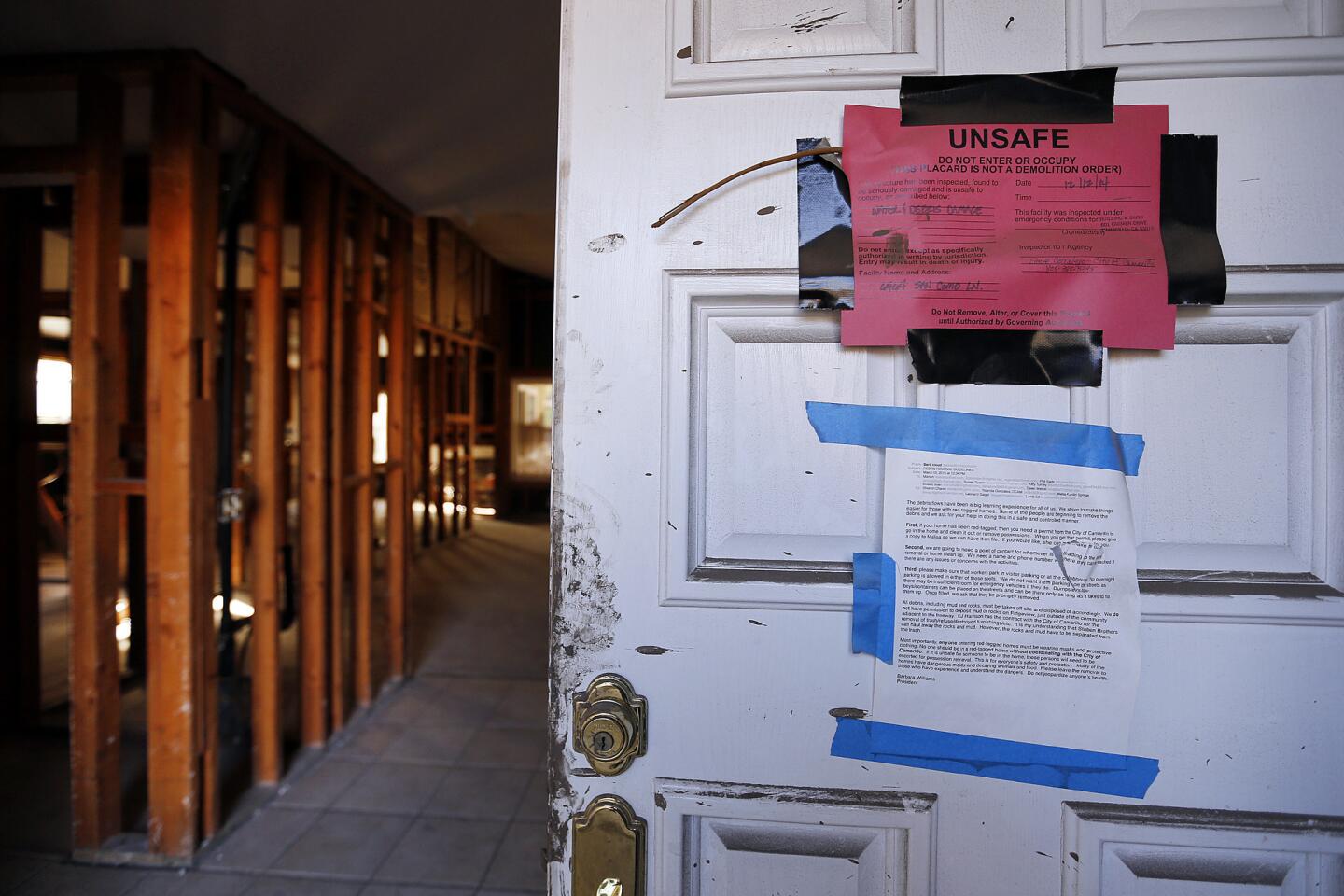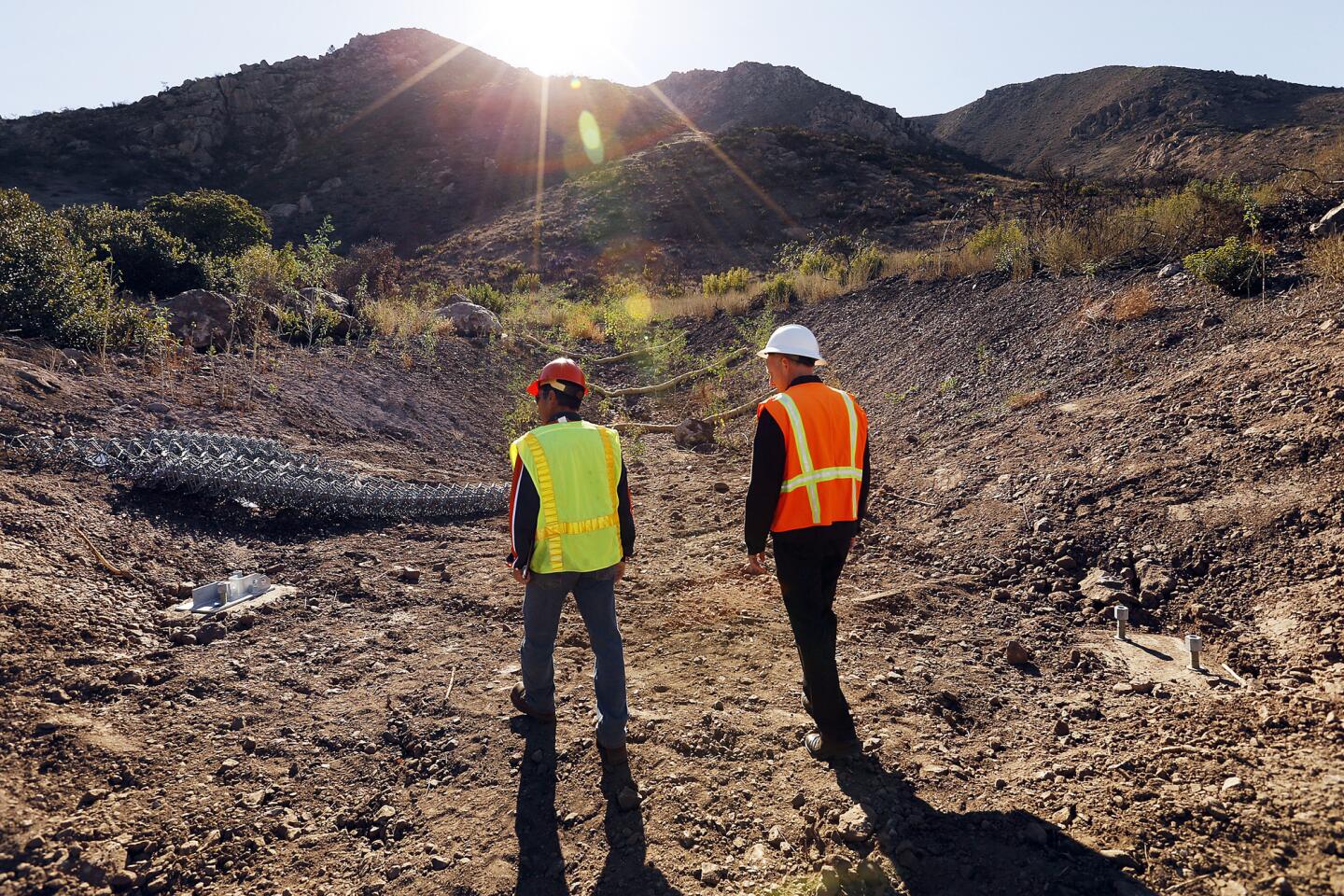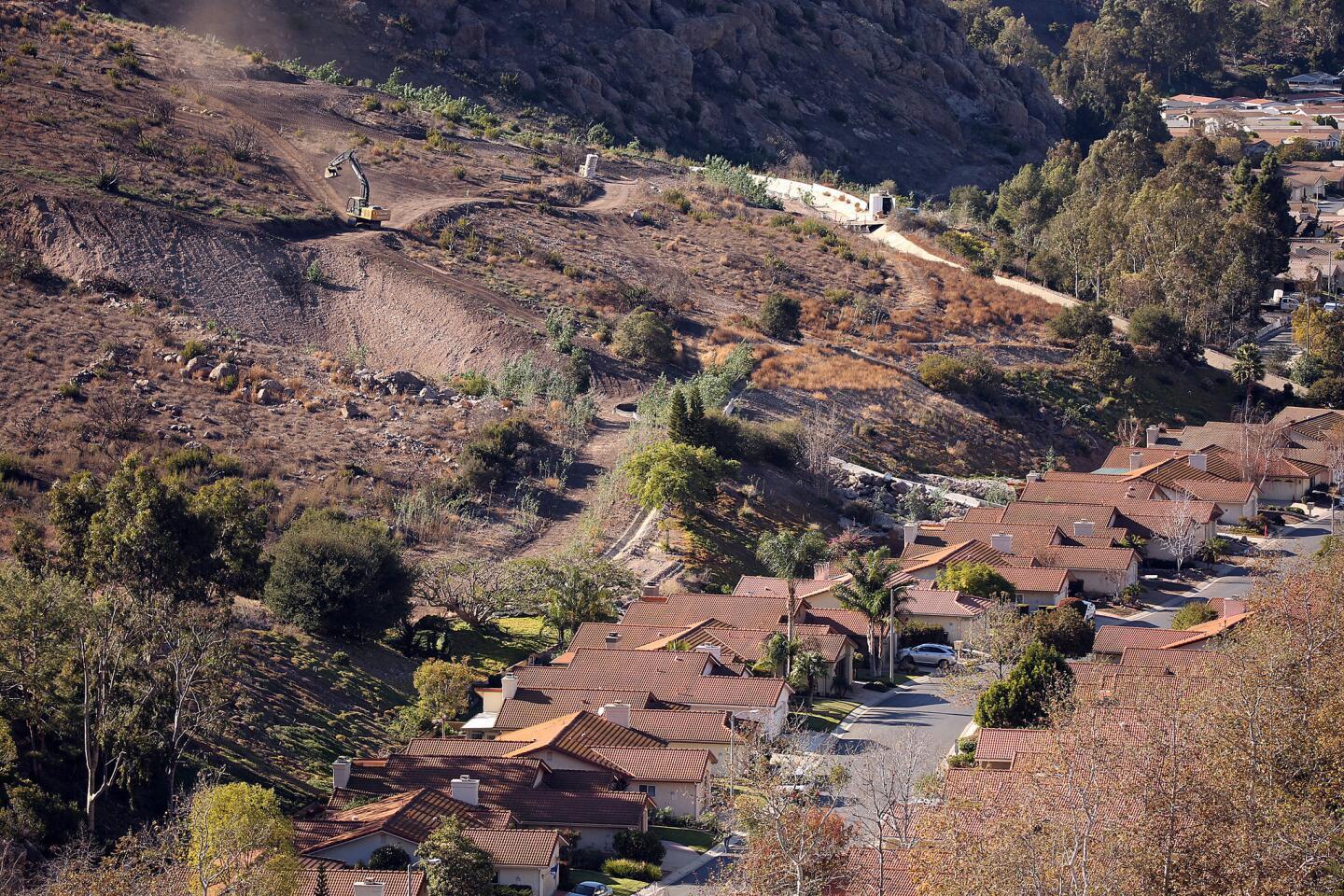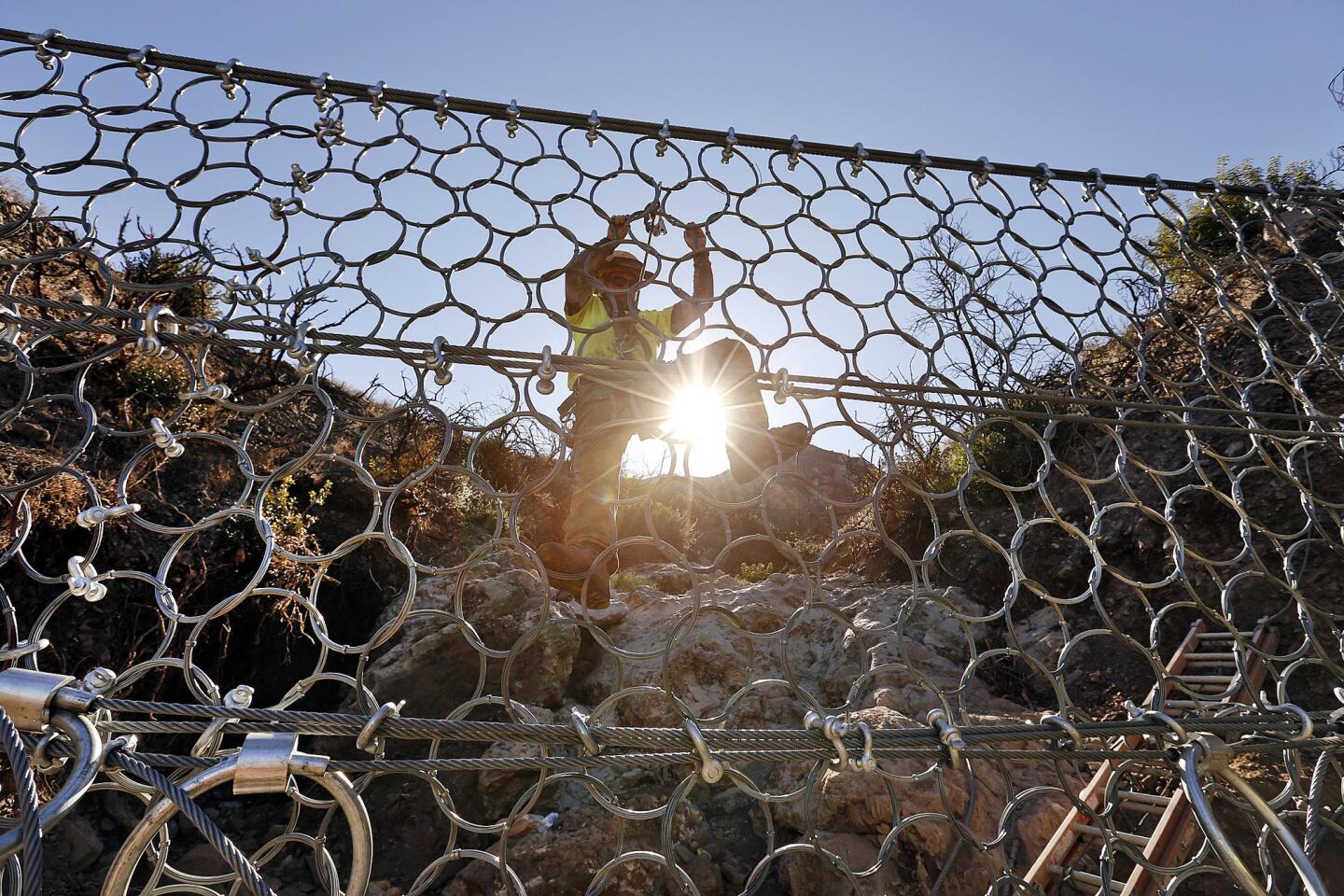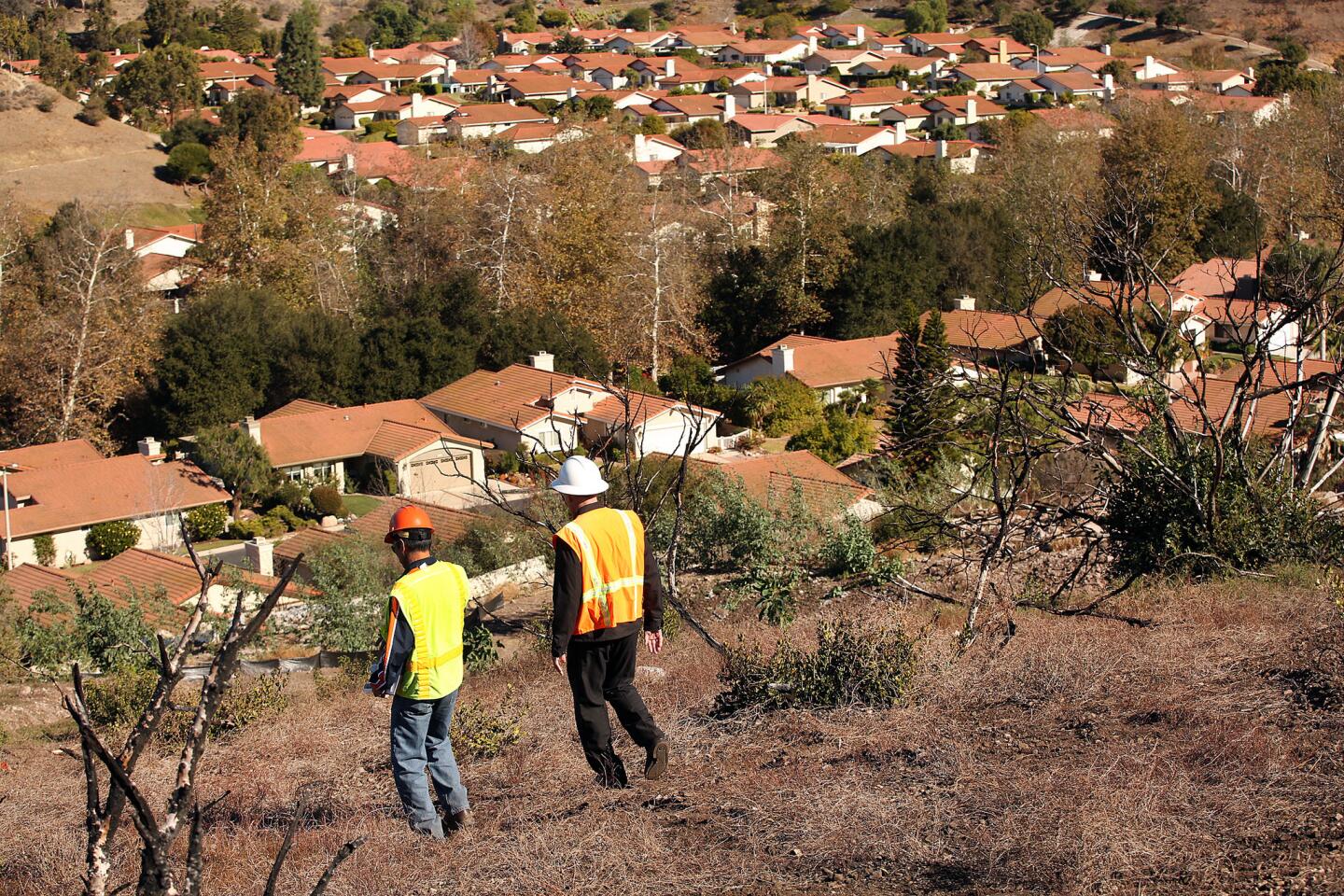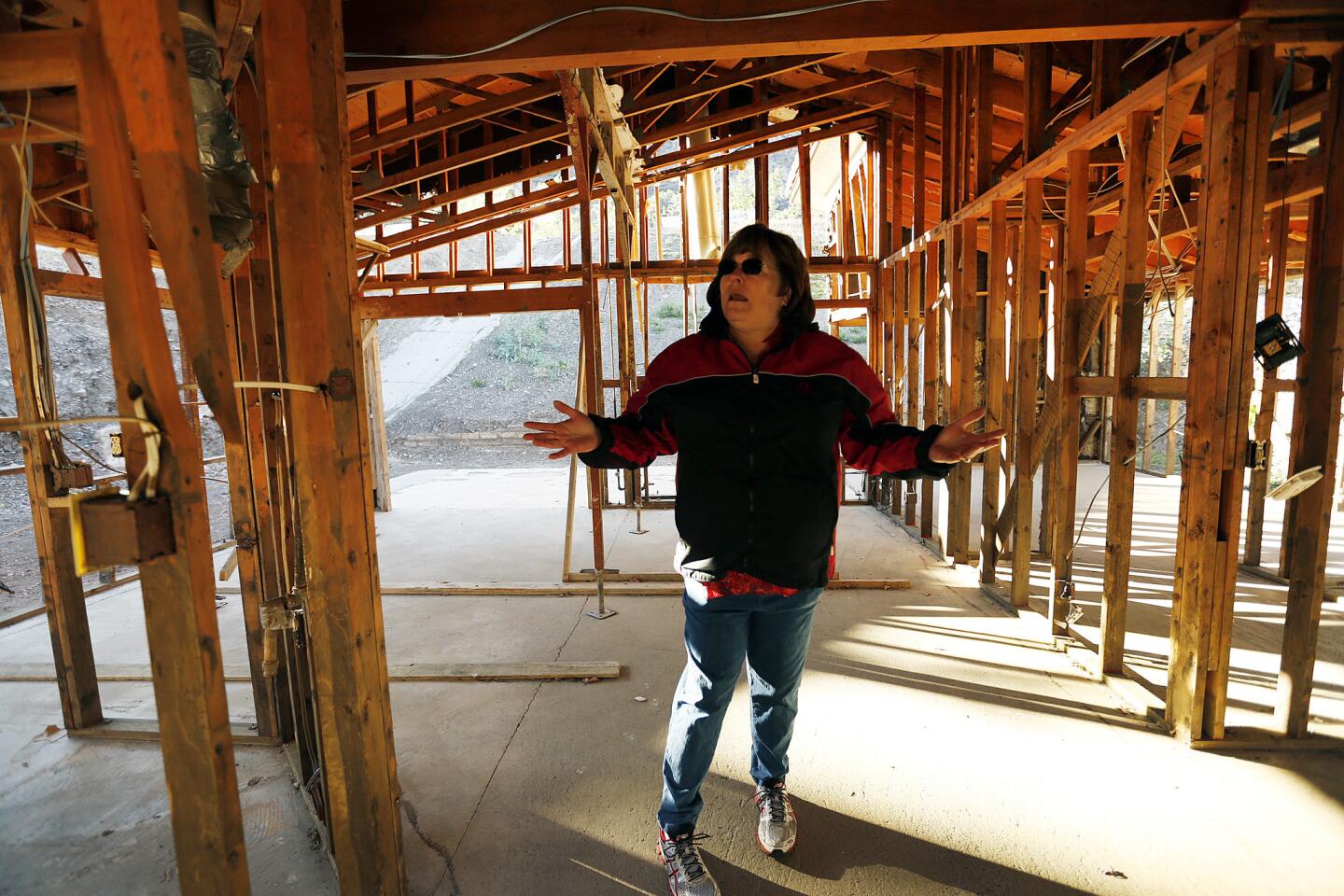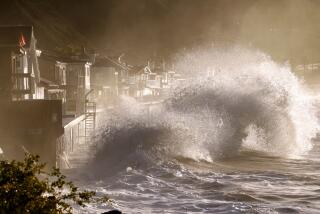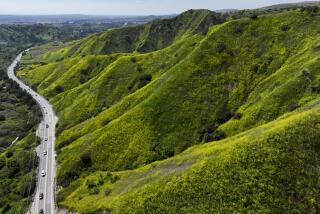California’s drought plus El Niño increase the threat of a muddy disaster

Crews install debris-flow barriers on Conejo Mountain, where debris threatens the Camarillo Springs development. The barriers were engineered in Switzerland.
- Share via
An intense October rainstorm that pounded the Grapevine’s barren hillsides offered a sober preview of what El Niño might unleash in the rest of drought-stricken Southern California.
The rain hit the dry, hardened terrain where the drought had shriveled vegetation. The topsoil easily gave way, with mudflows cascading onto Interstate 5 and local roadways and trapping motorists, many overnight, in several feet of debris.
Heavy rains often bring mudflows. But experts warn that the deluges expected this winter with El Niño are likely to be exacerbated by the dry conditions in countless hillside and canyon communities. Even a little rain can set off a fast-moving debris flow, sweeping up anything in its way — loose boulders, tree limbs, cars, even homes.
“The drought, it’s just made this whole situation worse. … That area that slid [in October]? It’s not green. There’s not even grass on it. It’s so dead because of lack of rain,” said Deborah Wong, a deputy director for the California Department of Transportation. “If there’s no root structure to hold the mountain back, or at least the topsoil, it’s coming down.”
From Ventura County to San Diego County, officials are racing to clean out debris basins, install protective barriers and develop evacuation plans for communities most at risk from an El Niño forecast to be one of the strongest ever recorded.
Debris flow has long been a concern in areas where wildfires have recently burned. Vegetation, once burned, can no longer hold back loose sediment.
The burned slopes can also become “water repellent,” said Jason Kean, a U.S. Geological Survey hydrologist whose research focuses on debris flow. Ash tends to clog the soil after fire, and oily substances can affect the ground’s ability to absorb water. Impact from the rain can also help seal the top layer of sediment.
It’s like water on a parking lot or the surface of a playground slide, Kean said: “When the rainfall hits it, it just runs right off. … The rapid runoff from these bare hill slopes can quickly pick up sediment, and that can transform into a really nasty debris flow.”
Now with the drought, an unburned slope may act like a burn area. Officials in October were stunned that much of the I-5 mudflow hit an area that had not been burned in recent years.
“It was a lot of rain, with nothing holding that topsoil back,” said Wong, who oversees maintenance, including vegetation control, for Caltrans in Los Angeles and Ventura counties.
“There are areas where we don’t landscape, don’t water. We’re relying on the natural vegetation of the area,” Wong said. “Lots of areas in Ventura. All of Malibu. … We’re relying on nature to continue to water the plants, and it hasn’t.”
The fall storms were not related to El Niño, but experts said events similar to what happened on I-5 could occur elsewhere in the months ahead — both in burned and unburned areas.
Generally, burn areas are more prone to debris flow for three to five years after a fire — the amount of time usually needed for vegetation to grow back. With each additional year of recovery, the risk decreases, experts said.
For major burn areas in Southern California, officials have long analyzed just how much rain it might take before the debris starts tumbling. If weather forecasters see that rainfall is reaching the trigger threshold, they can issue alerts to help officials evacuate residents in time.
But the drought has thrown off these calculations.
In Ventura County, emergency response officials are eyeing the roughly 24,250 acres ravaged by the 2013 Springs fire. Drought has played havoc with the usual timetable for vegetation recovery.
“There is no growth there. We’re on year three, and we’re acting like it’s year one for the Camarillo Springs community,” said Gil Zavlodaver, of the Ventura County Sheriff’s Office of Emergency Services. “We’re monitoring that situation very closely with the city.”
Back when the hills were verdant, the vegetation was able to anchor the soil in even the heaviest storms in 1998 and 2005. But last December, the slopes came crashing down in a torrent of mud, rocks and dead branches like “white-water rapids,” residents said. Debris knocked out sliding doors, filled garages to the ceiling, and swept one woman out her front door.
The most damaged homes still sit empty. Barbara Williams, president of the homeowners association, spoke with awe as she walked through the skeletal frame of one house, recalling the day nature tore apart 10 homes in her peaceful community.
“It just knocked the K-rails out like Tinkertoys,” she said. “Big boulders — I mean, humongous boulders — came down.”
Camarillo Springs is preparing for the worst. Detailed evacuation plans have been mapped out, and officials have carved out debris basins and installed steel cable netting designed to catch large rocks at the base of the slopes.
In Orange County’s Silverado Canyon, a gentle storm in September also offered a preview of what El Niño could bring. A series of mudflows swept through roads and threatened homes in the neighborhood, which is still recovering from last year’s wildfire.
“That’s one of our top hot spots, that fire burn area. There was just an inch or two of rain in September, and we saw three feet of mud across the county road there,” said Shannon Widor of Orange County Public Works.
But in neighboring Modjeska Canyon, where there was no burn area, “we saw mud and debris a couple feet down the roadway too,” Widor said. Operations and maintenance crews have been busy installing rain gauges and preparing for other unburned areas ahead of the storms.
El Niño is a warming of ocean waters west of Peru that can cause dramatic changes to the atmosphere, altering weather patterns worldwide. This year’s El Niño is stacking up to be one of the strongest on record, and is expected to bring heavy rains to California in January, February and March, climate experts said.
Generally, El Niño storms are not as intense as Pineapple Express storms, like the one in 2010 that unleashed a torrent of mud that crashed into more than 40 houses in La Cañada Flintridge.
MORE: Get our best stories in your Facebook feed >>
The problem with El Niño is that many smaller storms come one after another.
“It’s three months of continuous storms, so that’s not enough time for the water to saturate underground. It’s just going to hit and wipe away,” said AJ Jaime, an operations and maintenance manager for Orange County Public Works. After each storm, crews will be rushing to repair and clean out roads, flood control channels and hillsides before the next one arrives.
“After you have your first two, the third storm that comes by, we’ll start seeing issues no matter how much rain there is,” Jaime said.
Across Southern California, authorities have been hopscotching around hillside communities to help residents prepare.
Known burn areas are a top priority: In addition to Silverado Canyon and Camarillo Springs, officials are monitoring neighborhoods where recent fires occurred, in areas such as Glendora, Santa Clarita and Simi Valley.
Flood officials from the U.S. Army Corps of Engineers and seven counties in Southern California recently met to trade notes on El Niño preparations. The storms are known to be unpredictable, they acknowledged. There is always the chance that one street or neighborhood will experience a 1,000-year flood, like certain sections of the Antelope Valley during the intense October rains.
“We’re moving silt, we’re moving vegetation where we can. We’re cleaning out all of our catch basins, our storm drains,” Jaime said. “We’re doing everything in anticipation of this big El Niño, but Mother Nature is still a beast.”
Twitter: @rosannaxia
Times staff writer Rong-Gong Lin II contributed to this report.
ALSO
Video prompts calls for D.A. to reopen case of fatal shooting by L.A. County sheriff’s deputies
Sediment from O.C. dredging project will help restore beach sand and a marsh
Lyft can pick you up at LAX starting Wednesday
